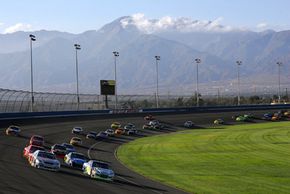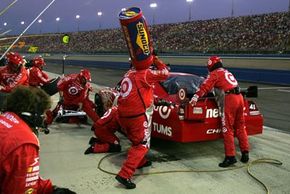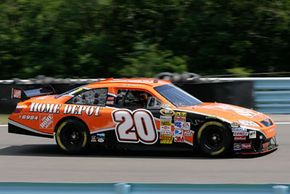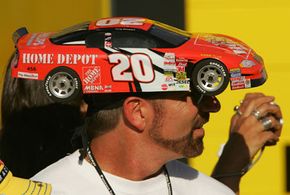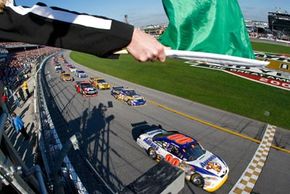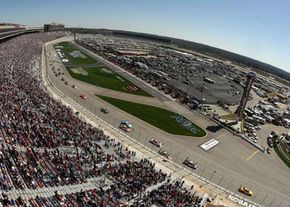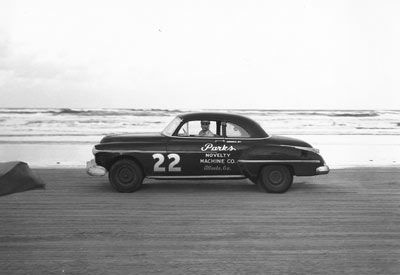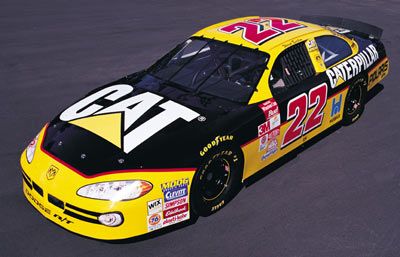At the track or on TV, it seems that nothing in NASCAR is without a sponsor. Cars are covered in logos and stickers, drivers have patches from shoulder to shoulder and every race is brought to you by one company or another. It stands to reason that sponsors shell out a lot of dough in NASCAR, but how much, exactly? And where does all that money go?
NASCAR Image Gallery
Advertisement
There are three NASCAR series, and each of them has many, many sponsorship opportunities. As you'll discover when you read the list below, the name of each series is also subject to change -- that's because the series are named after a sponsor, too.
- Sprint Cup: These are NASCAR's big guns. Sprint Cup races are run on Sunday afternoons, 36 times a year by 40 or more teams and feature the names you're probably familiar with: Dale Earnhardt Jr., Tony Stewart and Jeff Gordon. This series was formerly known as the Winston Cup Series.
- Nationwide Series: This series races on Saturday and is a step below Sprint Cup in popularity; however, it runs at the same tracks and usually on the same weekends as the Sprint Cup. As a matter of fact, a lot of Sprint Cup drivers got their big break in the Nationwide Series. Until recently, this was called the Busch Grand National Series.
- Craftsman Truck Series: The often-forgotten, but still exciting, NASCAR truck races also run at the big tracks. This series also draws some big names, including Kyle Busch, among others. Craftsman tools has sponsored this race for years, but the series is slated to get a new sponsor in 2009.
Since Sprint Cup races are by far the most popular in the United States, this article will focus on that series. It is also the most expensive set of races in the country, and the sponsorship dollars reflect that. Having an entire series named after a company or product will cost millions of dollars, which makes sponsoring a single race seem like a deal at only $500,000.
That's right -- being a primary sponsor of a team costs $350,000 to $500,000 per race, although corporations can usually cut a deal to sponsor a team for a full season. That means the sponsor gets to choose the paint scheme of the car, put the logo all over it, and use the driver's likeness in advertising for the product or service they want to promote. It is possible to be the primary sponsor for just one race, and for your half a million-dollar investment, the car will change its appearance for just that one venue.
The cost of everything else -- driver endorsement deals, stickers, cameras and more -- is negotiable. On the next page, we'll tell you what all those logos pay for.
Advertisement
